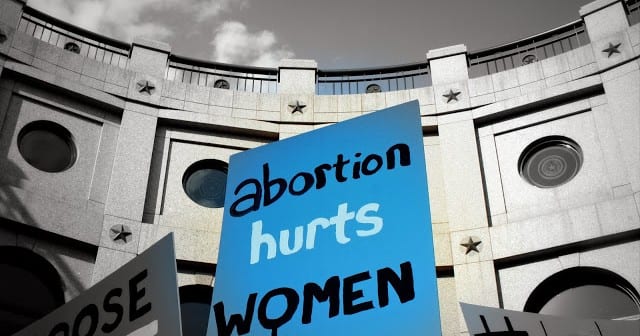Last week marked the beginning of arguments regarding Texas’s monumental Pro-Life law, House Bill 2. Whole Woman’s Health v. Hellerstedt is the culmination of an onslaught of unsuccessful legal challenges through which the abortion industry retaliated against the Pro-Life provisions of HB 2. The challenge was brought against the state of Texas by a Texas abortion chain and a New York-based abortion advocacy group. The Supreme Court heard arguments for and against the constitutionality of the pro-woman, Pro-Life law.
Interestingly, while HB 2 contains a monumental provision protecting pain-capable preborn children from the terror of elective abortion, abortion activists have utterly ignored that portion of the law and instead legally challenged the women’s health and safety provisions. Hinging their argument against these provisions on a tenuous term conjured by the Supreme Court in Planned Parenthood v. Casey over twenty years ago, opponents of House Bill 2 are challenging the law’s constitutionality on the grounds that the law places a so-called “undue burden” on women seeking to undergo elective abortions. The justification behind this argument is that HB 2 has led a number of Texas abortion mills to shutter because abortion businesses are either unwilling or financially unable to comply with the new safety regulations.
Ironically, while the abortion industry leaders argue out of one side of their mouth that the closure of rural abortion mills is a travesty, they simultaneously build new HB 2-compliant facilities in urban areas where other mills are already operational. In other words, the abortion industry is exacerbating the very situation they have deemed problematic, revealing that their real issue with HB 2 is that the law is inconvenient for their businesses’ profitability.
In a comprehensive recounting of Wednesday’s events, Elizabeth Slattery and Hans Von Spakovsky underscore the most noteworthy exchanges and outline the overall approaches by anti- and Pro-Life advocates. According to the report, Justice Samuel Alito noted shoddy research by the plaintiff, whose legal team failed to enter into evidence key data on abortion trends. The dearth of research by the plaintiff prompted Justice Anthony Kennedy to ask whether the case should be remanded to the lower court until the plaintiff could do a more thorough job of preparing evidence. Alito also noted that while the plaintiff’s argument hinges on conveying the problem of Texas abortion mill closures, three new abortion mills have opened since HB 2 went into effect.
In exchanges with Justices Sonia Sotomayor, Stephen Breyer, and Ruth Bader Ginsburg, Texas Solicitor General Scott Keller attempted to outline the state’s reason for holding abortionists to the same medical standards as doctors. The Justices seemed incredulous that abortionists would be held to these commonsense standards, but Keller noted that even the National Abortion Federation – which staunchly advocates for the most dissolute standards in the commission of abortion – once advocated for abortionists to possess hospital admitting privileges.
Indeed, Justices Sotomayor and Ginsburg exhibited greater concern for abortion activist ideology than facts regarding the medical risks abortion poses to women. They betrayed a lack of understanding in questioning why abortionists should be required to follow FDA protocol in medical abortions. Keller pointed out that medical abortions have a higher risk of complications than surgical abortions. Justices Sotomayor and Ginsburg appeared unwilling to relinquish the unsound ideologies that enshrined Roe v. Wade as the legal embarrassment of SCOTUS cases since 1973.
Texas Right to Life’s Legislative Director John Seago, who attended the oral arguments, summarized the divide on the Court: “There was an easily identifiable distinction between the two groups of Justices on the Supreme Court. The four liberal Justices are trying to redefine the role the Court has in determining the medical prudence of individual state policies, while the three conservative Justices are defending the role the Court has previously defined in Roe v. Wade,Casey v. Planned Parenthood, and Gonzales v. Carhart.”
In a moment of insight into how SCOTUS might decide in June, Justice Breyer acknowledged that the state’s intent to protect women through the provisions of HB 2 was self-evident. This acknowledgment is significant because the plaintiff’s argument is that the health and safety provisions of HB 2 are not only unnecessary but unconstitutional.
Slattery and von Spakovsky conclude that “The Supreme Court now has an opportunity to confirm that states have a legitimate interest in ensuring the safety and health of women who enter abortion clinics,” and note that the plaintiff’s façade of concern for women’s health is a sham: “The essence of the argument made by the plaintiffs in this case and all of their amici is that the ability of abortion clinics to remain open – even under substandard conditions – should outweigh the state’s ability to put women’s health and safety first.”

